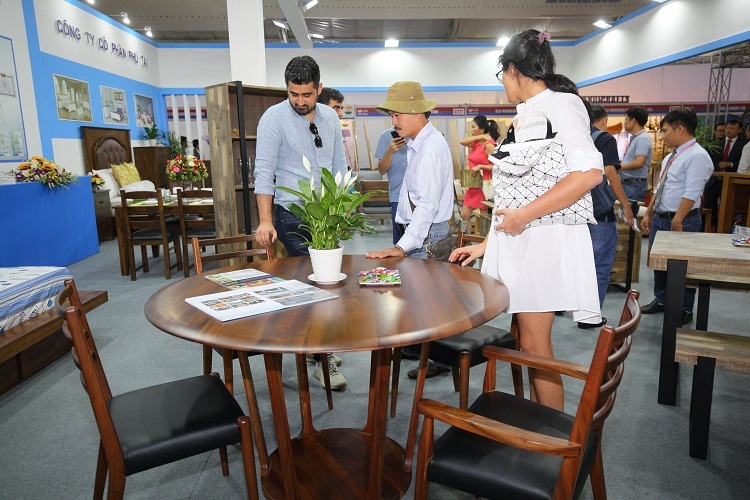Valued at $4 billion, the domestic woodwork market is more promising as Millennials, or those born 1980-1998, account for 35 percent of Vietnam’s population.

In 2007, Calucky, a trader of decoration vases, officially joined the Vietnamese market. In the first two years, Calucky’s business was bad with low revenue unable to cover expenses, though the products available there were made by An Co, a well known brand specializing in exporting products to Europe.
Bui Huy Hung, director of An Co, when recalling the days, said visitors were surprised when realizing that the products available at Calucky were made for export.
|
Domestic demand for Vietnam-made was not high two years ago, but the situation is now different. Vietnamese now have confidence in Vietnamese product quality, while Vietnamese manufacturers have become more professional. |
A client then said if these were Vietnam-made products, he would help advertise the products to his friends.
“His words gave us more power to become more patient in conquering the home market,” Hung said.
Hung realized that a lot of his products exported to other countries were re-imported to Vietnam and selling at prices much higher than the initial prices. This prompted him to set up a showroom and build the Calucky brand.
Ten years ago, domestic demand for Vietnam-made was not high, but the situation is now different. Vietnamese now have confidence in Vietnamese product quality, while Vietnamese manufacturers have become more professional.
Other businesses have also found that their exported products have come back to the domestic market.
Do Thi Kim Loan, CEO of Sao Nam Flooring, said no one believed her when she told an importer that the products he imported were made by Sao Nam. The importer affirmed that the products were imported under a special order and ‘they were highly valuable’.
Only when she pointed out the specific stamp of Sao Nam on the other side of products did the importer believe that they were Sao Nam’s products.
Established in 2005, Sao Nam began production, mostly targeting export markets. However, after discovering that its products returned to the home market where they sell well, Loan changed her business strategy.
“We decided to make additional investments to conquer the domestic market,” she said.
Nguyen Chanh Phuong, deputy chair of Hawa, noted that Vietnamese favored imports because they think domestically made products cannot satisfy their requirements. But they have changed their mind. The opportunities for Vietnamese manufacturers are now great.
Manufacturers have also changed their thoughts themselves. Previously, they only made low-cost products for the domestic market, but now, they offer high-end products and specifically designed collections.

Vietnam dreams of moving from outsourcing to making its own high-tech products
If Vietnam does not have reasonable policies to develop excellent technology engineers, its dream of building technology powerhouses will never be realized, experts say.

High productivity key for Vietnam to pursue inclusive growth
Vietnam’s manufacturing labor productivity remains around a quarter of China’s and Malaysia’s, one third of Indonesia’s and the Philippines’, a half of India’s and Thailand’s, and just around 7% of Japan’s and South Korea’s.
Mai Lan
 Many Vietnam-made products, after being exported to other countries, have been re-imported to Vietnam and sold at prices much higher than the initial prices." itemprop="description" />
Many Vietnam-made products, after being exported to other countries, have been re-imported to Vietnam and sold at prices much higher than the initial prices." itemprop="description" />